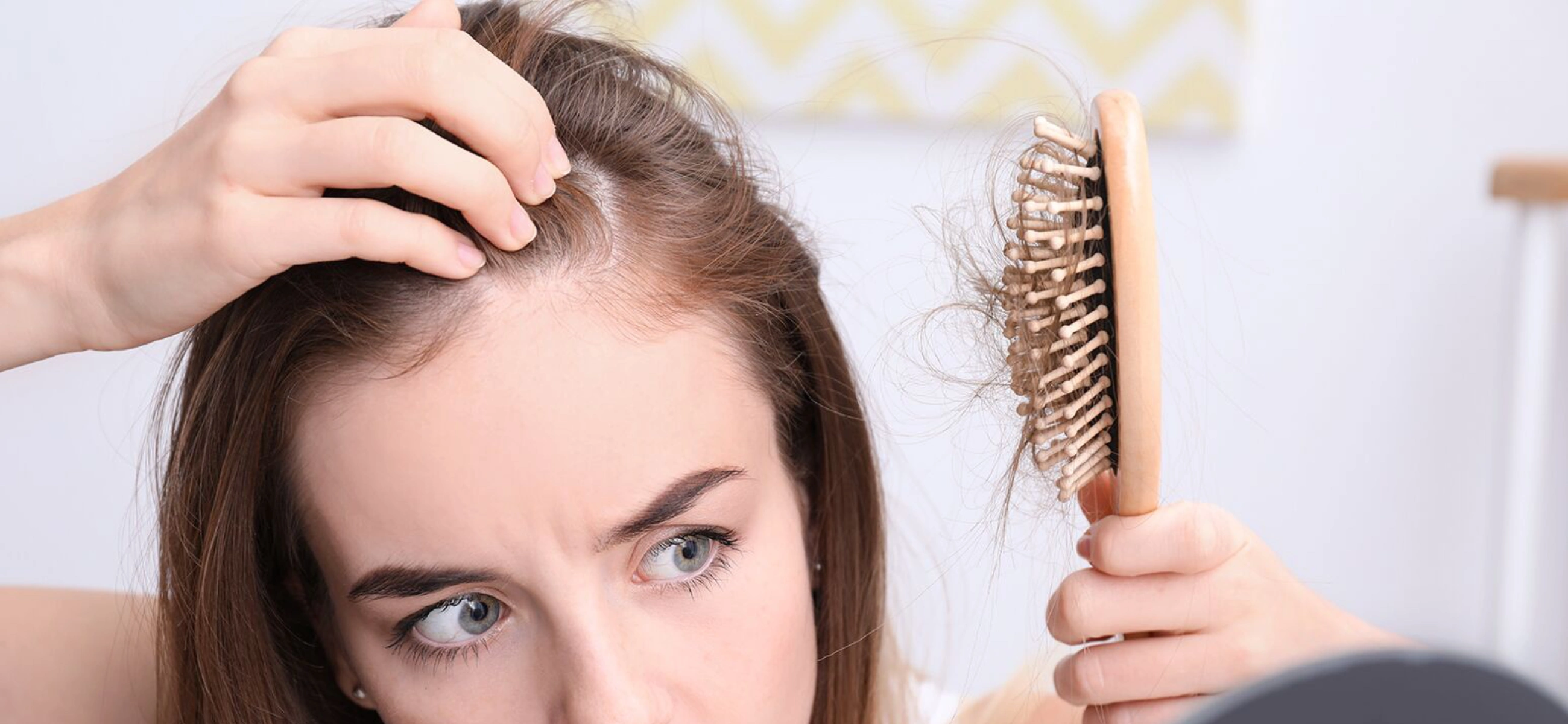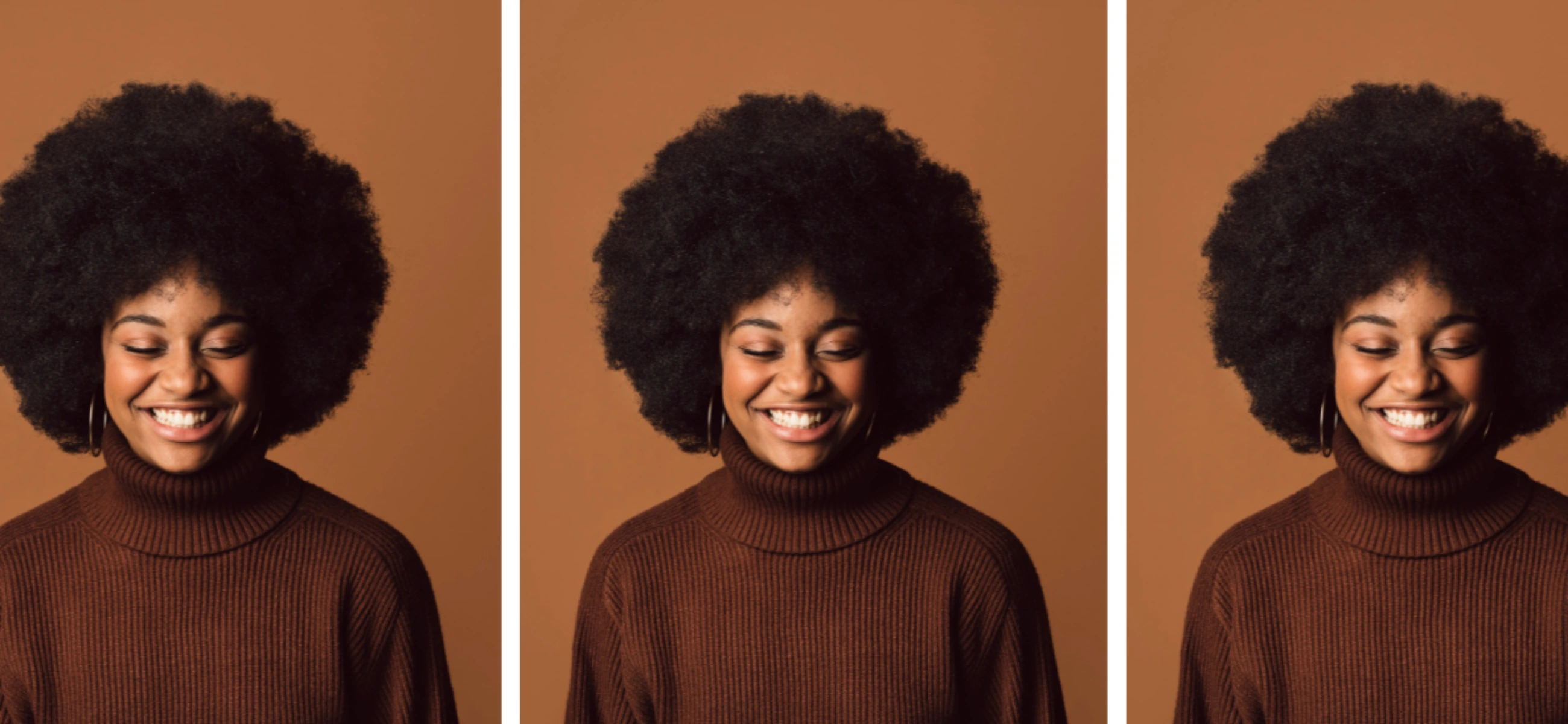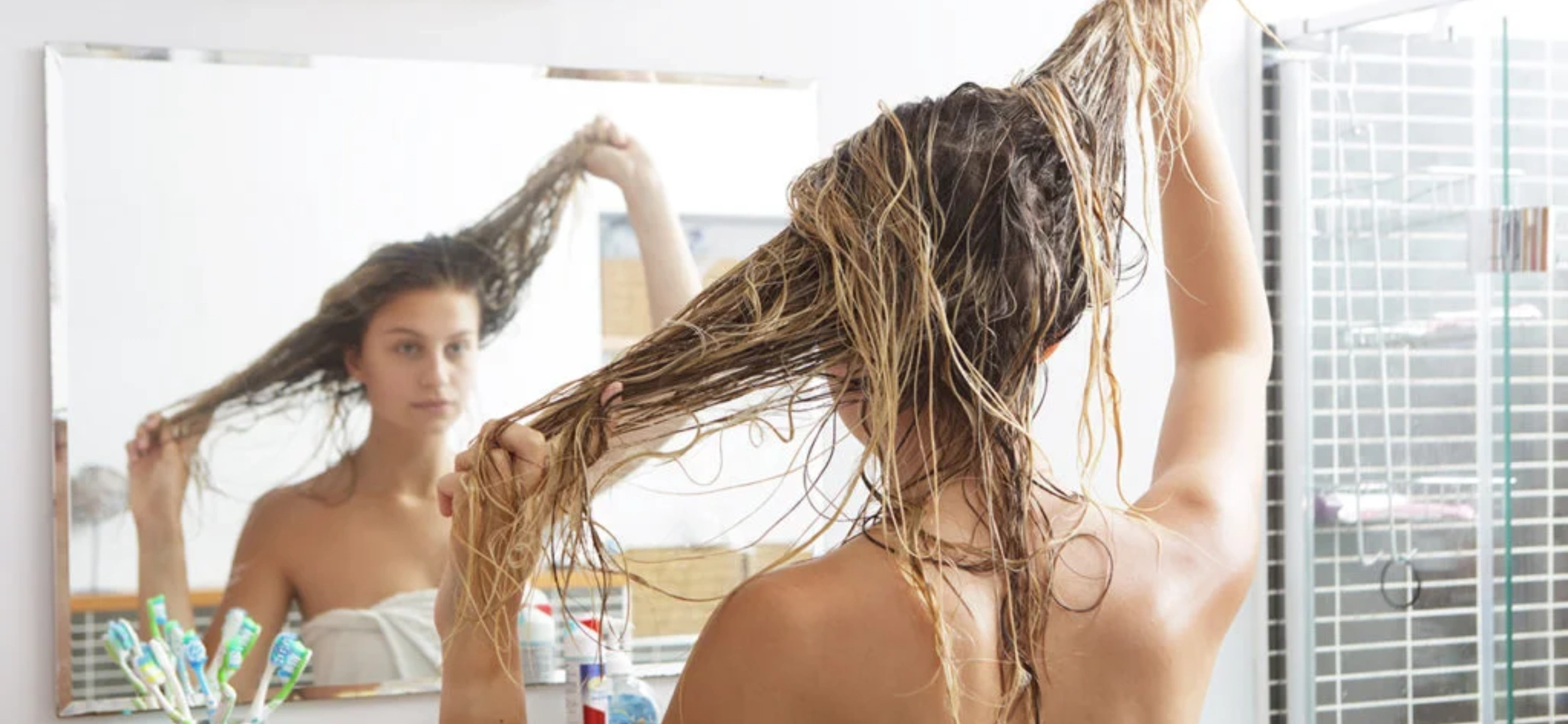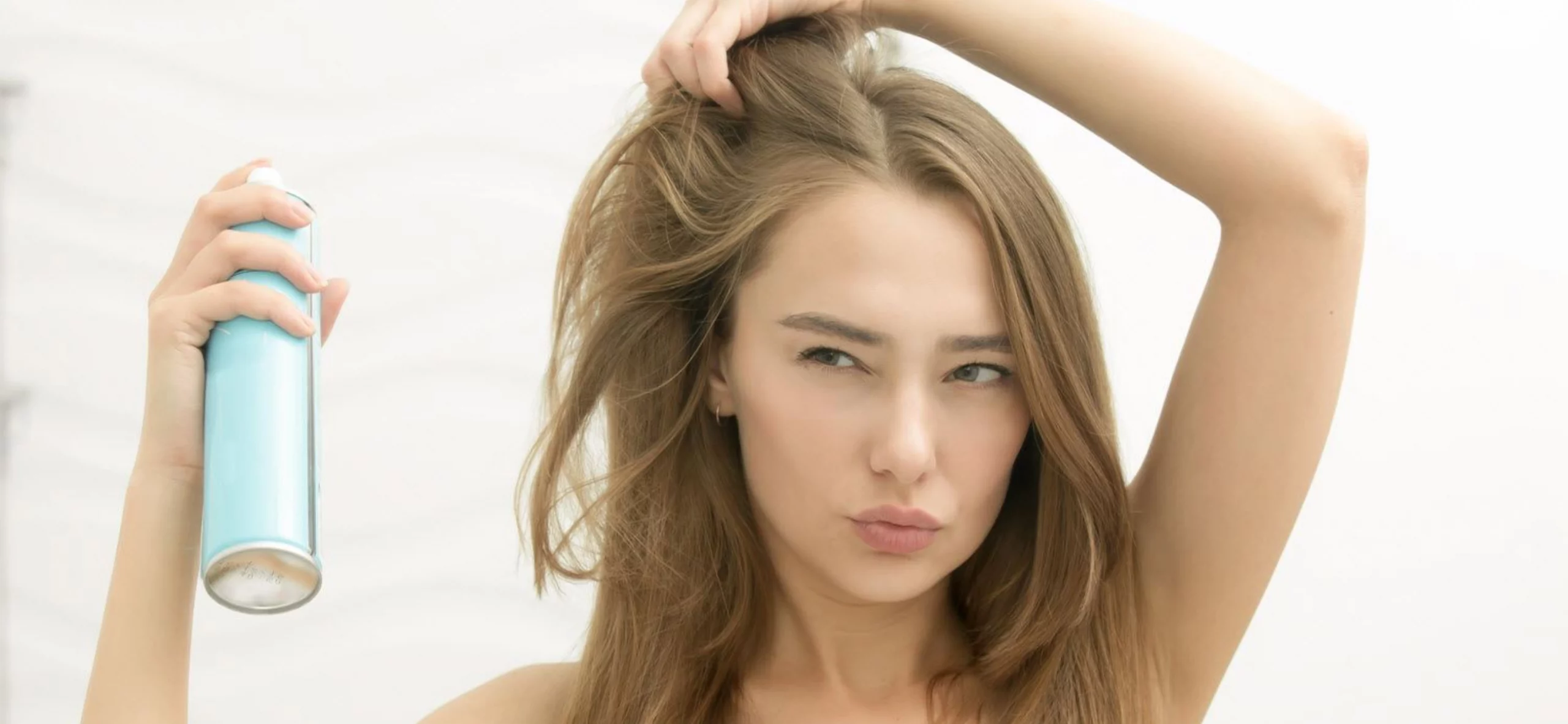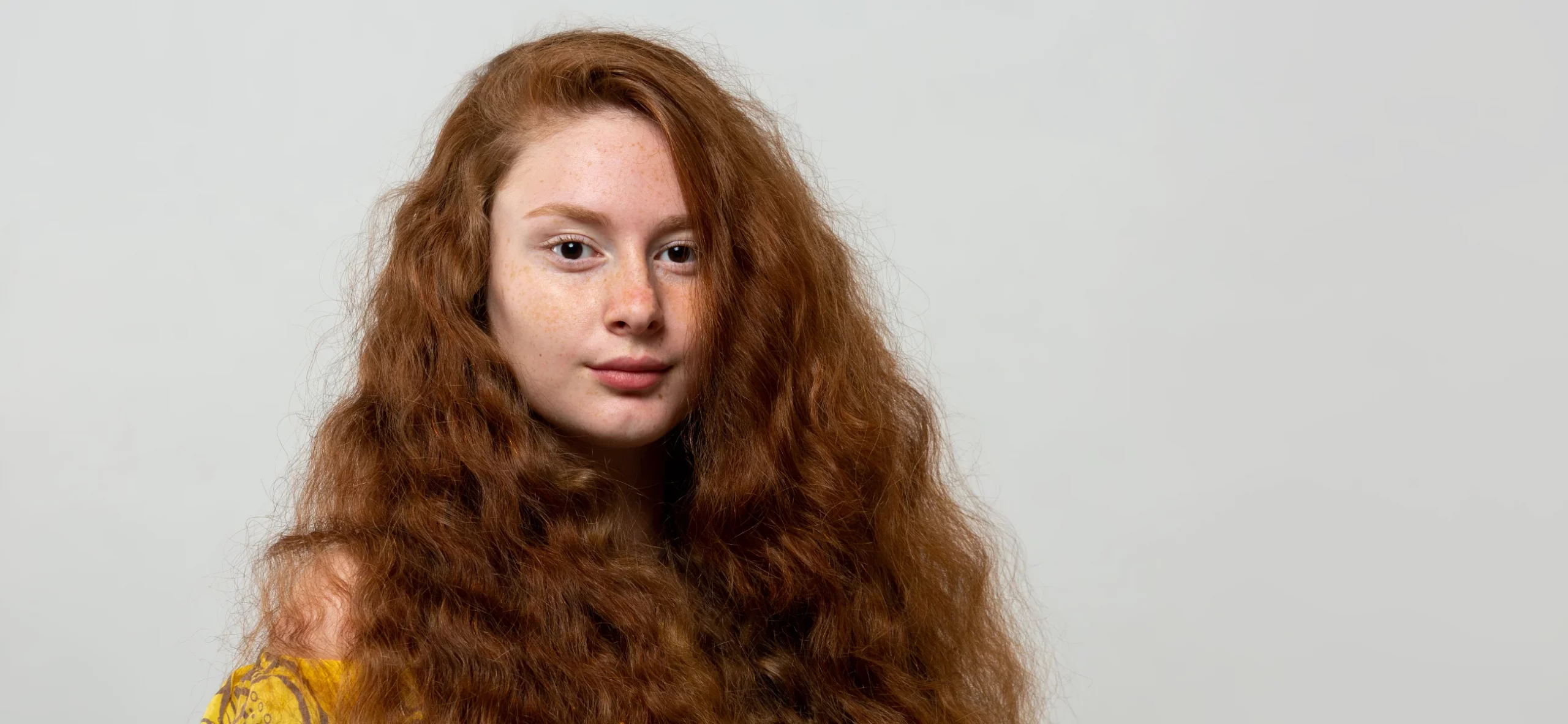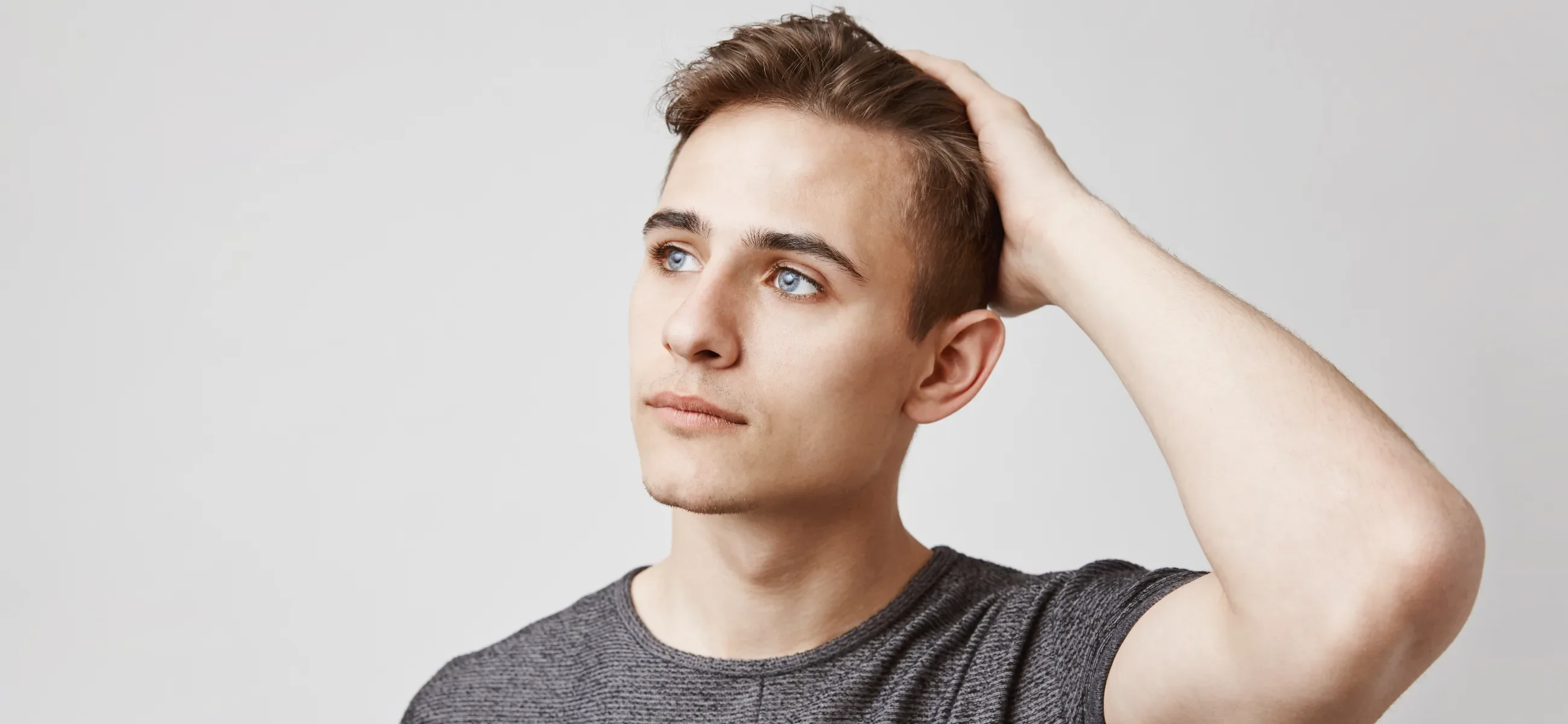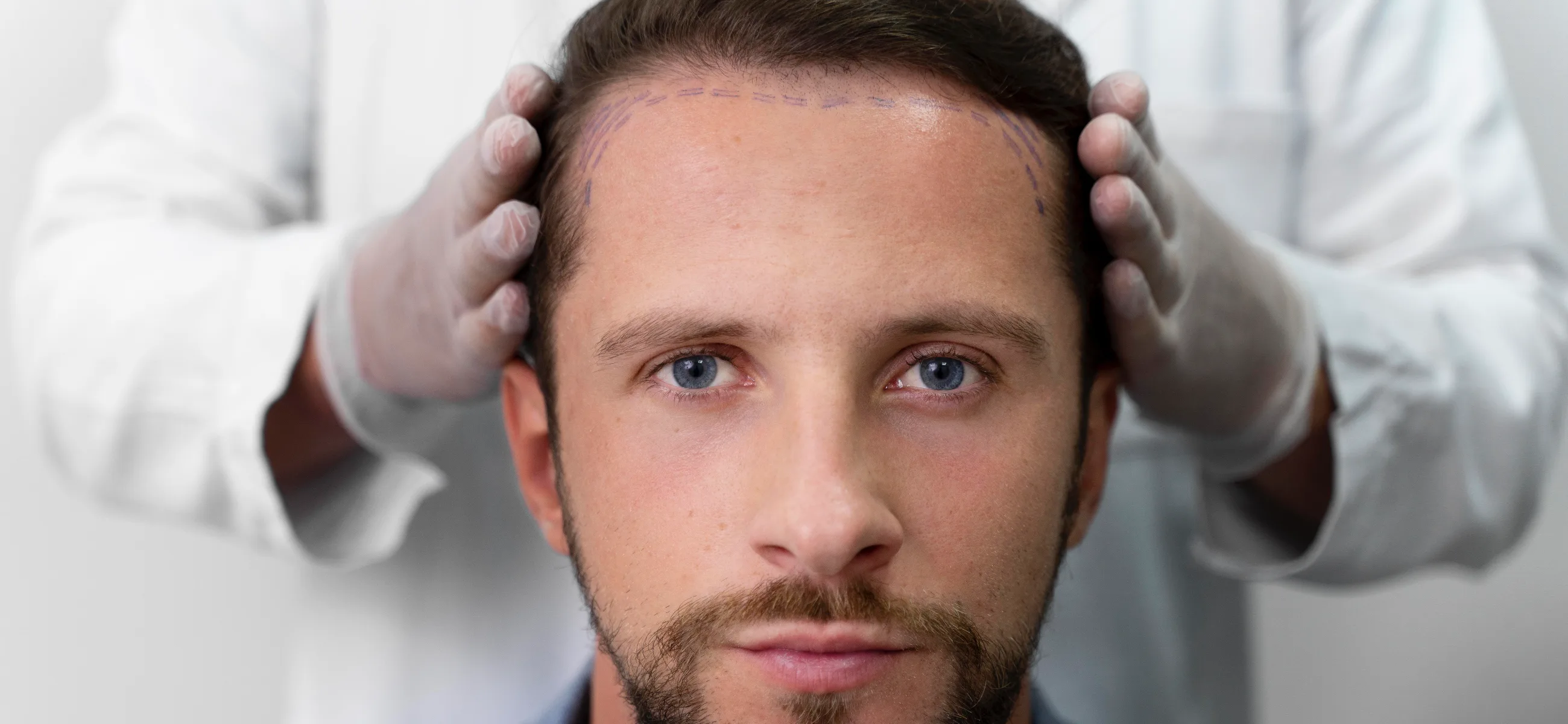Hair loss in women is becoming an increasingly common problem. While it’s often associated with aging, it’s alarming to see a rise in cases among younger women as well. This issue isn’t just about vanity—hair loss can significantly impact self-esteem and overall well-being. So everyone should pay more attention to hair loss at any age, seek a proper diagnosis, and find effective prevention methods.
Lossing hair can be a tough journey, but understanding it and knowing your options can help a lot. Keep reading our content for more tips and insights on how to manage and prevent hair loss. We’re here to help you navigate this topic thoroughly, so you can take the best possible care of your hair at any age.
What causes hair loss in women?
Here are the most common reasons why women experience hair loss:
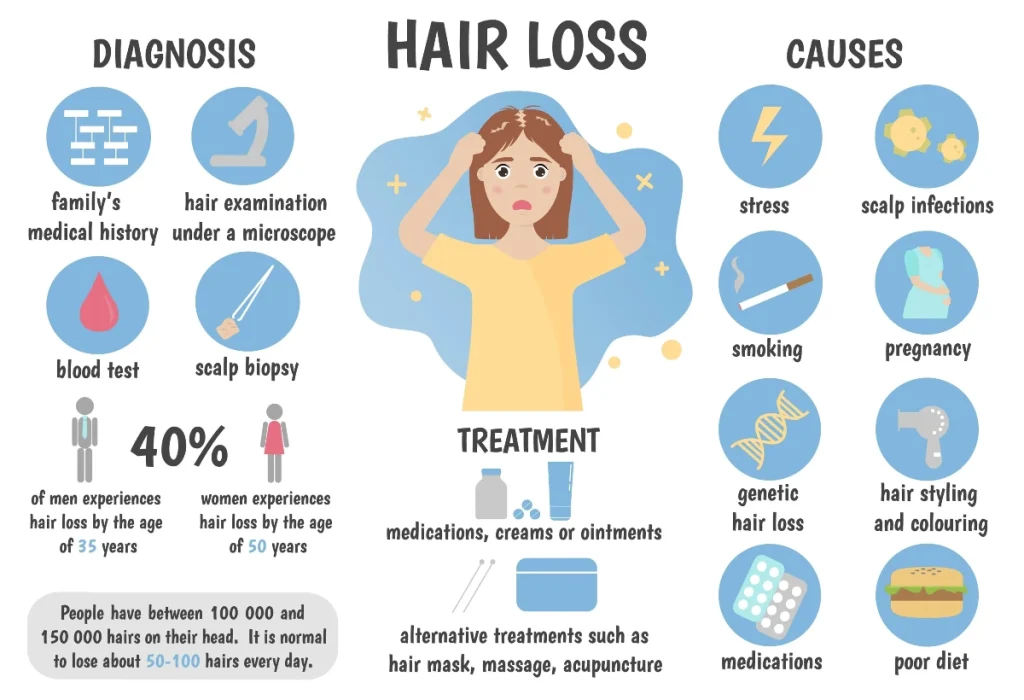
1. Hormonal changes
Hormonal fluctuations have an impact on hair health. Key stages in a woman’s life, such as pregnancy, childbirth, menopause, and even the menstrual cycle, can cause temporary or permanent hair loss. Conditions like polycystic ovary syndrome (PCOS) also contribute to hormonal imbalances that affect hair growth.
2. Stress
Physical and emotional stress is supposed to push hair follicles into a resting phase and then cause hair shedding. This type of hair loss, known as telogen effluvium, occurs a few months after a stressful event, such as surgery, illness, or significant life changes.
3. Nutritional deficiencies
A diet lacking in essential nutrients can weaken hair and cause it to fall out. Deficiencies in iron, vitamin D, B vitamins, zinc, and protein are linked to hair loss.
4. Medical conditions
Various medical conditions can lead to hair loss in women. These include:
- Alopecia areata: An autoimmune disorder where the immune system attacks hair follicles, causing patchy hair loss.
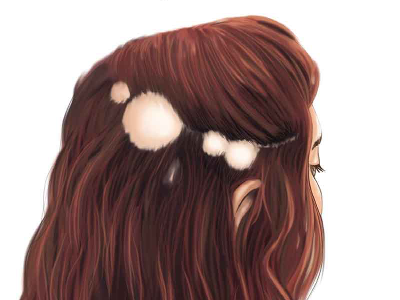
- Thyroid disorders: Both hypothyroidism and hyperthyroidism can disrupt hair growth cycles.
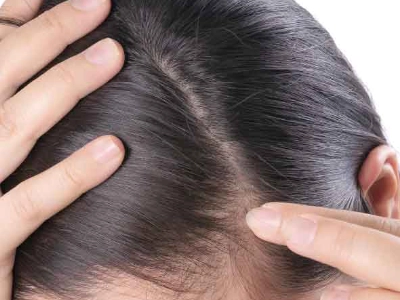
- Scalp infections: Fungal infections like ringworm can damage the scalp and cause hair loss.
- Chronic illnesses: Conditions such as diabetes and lupus can also affect hair health.
5. Hair care practices
Certain hair care habits can contribute to hair loss. Overuse of heat styling tools, harsh chemical treatments, tight hairstyles (like braids or ponytails), and frequent dyeing can damage hair shafts and follicles.
6. Medications
Some medications have side effects that include hair loss. These can range from drugs used in chemotherapy to those for treating high blood pressure, depression, and arthritis.
7. Aging
As women age, the natural cycle of hair growth and shedding can slow down. Hair may become thinner and more brittle, so you will notice increased hair loss.
Sudden hair loss in women: What’s up?
Sudden hair loss in women can be a distressing experience, and you can see the most common factors that can lead to it:
1. Telogen effluvium
Telogen effluvium is one of the most frequent causes of sudden hair loss. It occurs when a large number of hair follicles enter the resting phase of the hair growth cycle simultaneously, leading to significant shedding.
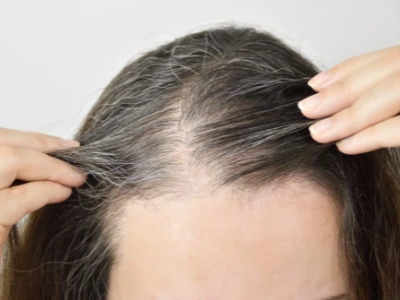
2. Alopecia areata
Alopecia areata is an autoimmune condition where the immune system attacks hair follicles, causing hair to fall out in small, round patches. This condition can be sudden and is believed to be triggered by stress or other environmental factors in genetically predisposed individuals.
3. Traction alopecia
Traction alopecia results from prolonged tension on the hair due to tight hairstyles such as braids, ponytails, or extensions. If the tension continues over time, it can lead to permanent hair loss.
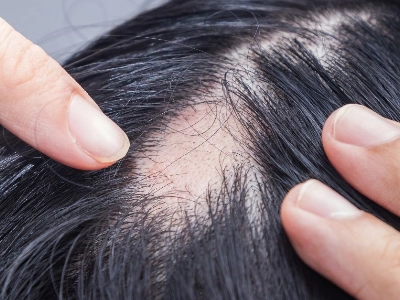
4. Trichotillomania
Trichotillomania is a psychological disorder characterized by the compulsive urge to pull out one’s hair. This behavior can cause noticeable hair loss and requires psychological or behavioral therapy for effective treatment.
Symptoms of the hair loss of a woman
The following 7 symptoms can help you determine whether you are losing your hair.
- Noticeable reduction in hair volume, particularly on the crown or part line.
- More hair falling out than usual, seen on brushes, pillowcases, and in the shower.
- Hairline starts to move back, especially at the temples.
- Small, round patches of missing hair on the scalp.
- The part in the hair appears wider due to thinning.
- More of the scalp is visible through the hair.
- Sometimes accompanied by scalp discomfort or dandruff.
Stages of hair loss
Hair loss is a process. Although each person’s situation is different, the general steps can be analyzed. It can be seen that hair loss is divided into 5 stages, and different methods need to be adopted to solve different stages.
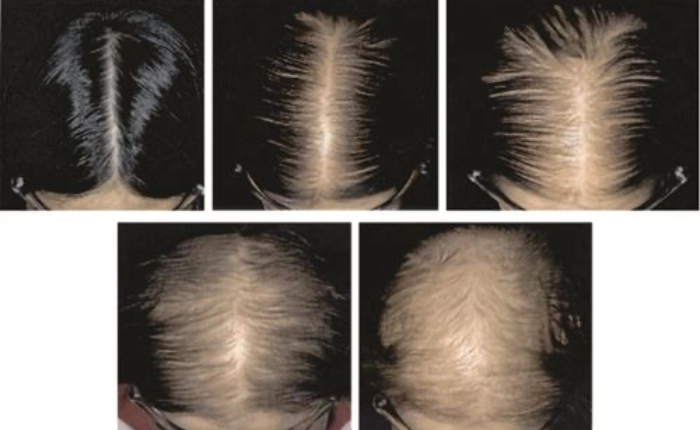
| Stage | Characteristics | Potential interventions |
| Stage 1: Initial thinning | Slight thinning of hair, noticeable primarily on the crown or part line. | Maintain a balanced diet; Use gentle hair care products; Manage stress |
| Stage 2: Increased shedding | More noticeable shedding, hair may start to thin at the temples and along the hairline. | Consult a healthcare professional for diagnosis; Consider over-the-counter treatments like minoxidil |
| Stage 3: Visible thinning | Visible thinning and loss of volume, especially on the top of the head. | Prescription treatments (e.g., finasteride); Lifestyle changes to reduce stress; Scalp massages to stimulate blood flow |
| Stage 4: Advanced thinning | Significant hair loss, bald patches may appear, overall hair density is noticeably reduced. | Hair transplant or other surgical options; PRP (Platelet-Rich Plasma) therapy; Wigs or hairpieces for cosmetic coverage |
| Stage 5: Severe hair loss | Extensive hair loss, bald patches become larger, and overall scalp visibility increases. | Continued medical treatments as prescribed; Scalp micropigmentation; Emotional support and counseling |
Risk factors for women’s hair loss
There are some risk factors for hair loss in women. Understanding these factors can help you prevent diseases in time, etc.
- Physical or emotional stress.
- Lack of essential vitamins and minerals.
- Autoimmune diseases, scalp infections.
- Chemotherapy, certain blood pressure and depression medications.
- Excessive styling, heat, and chemical treatments.
- Aging process.
Vitamins for women who has hair loss condition
Find the corresponding vitamins. You need to take certain vitamins to help you solve the problem of hair loss. You need to check the vitamin details or consult your doctor before taking any vitamin.
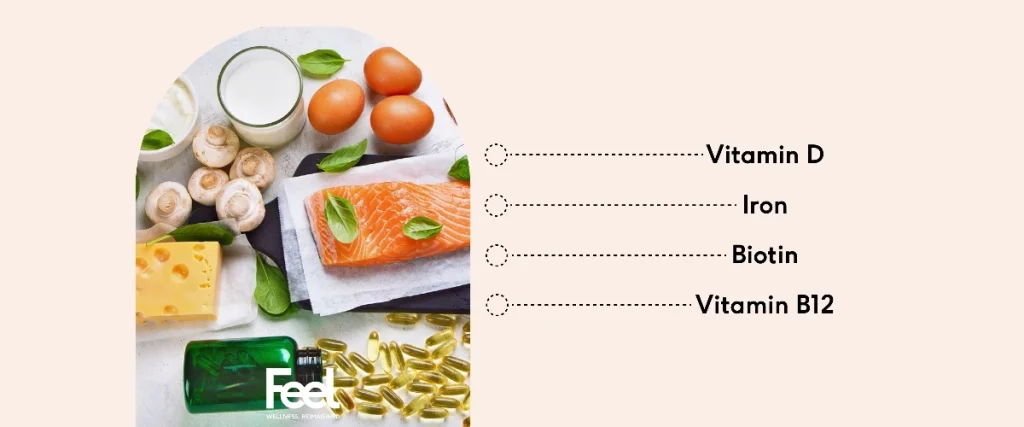
| Vitamin | Benefits for hair | Food sources |
| Vitamin A | Promotes healthy scalp and hair growth | Carrots, sweet potatoes, spinach, kale, fish oil |
| Vitamin B7 (Biotin) | Strengthens hair, improves texture | Eggs, nuts, seeds, salmon, avocados |
| Vitamin B12 | Supports hair growth by aiding red blood cell production | Meat, dairy products, fish, fortified cereals |
| Vitamin C | Helps in collagen production, enhances iron absorption | Citrus fruits, strawberries, bell peppers, broccoli |
| Vitamin D | May stimulate hair follicles | Sun exposure, fatty fish, fortified dairy products, mushrooms |
| Vitamin E | Improves blood circulation to the scalp | Nuts, seeds, spinach, broccoli, vegetable oils |
| Iron | Prevents hair loss due to anemia | Red meat, beans, lentils, spinach, fortified cereals |
| Zinc | Supports hair tissue growth and repair | Meat, shellfish, legumes, seeds, nuts |
| Omega-3 fatty acids | Nourishes hair, reduces inflammation | Fatty fish, flaxseeds, chia seeds, walnuts |
Best products for hair loss in women
To help prevent and recover from hair loss, using some products will be more efficient than improving your diet. Here are some recommended products:
1. Minoxidil (Rogaine)
Minoxidil (Rogaine) is a popular and FDA-approved topical treatment for hair loss. It’s designed to stimulate hair follicles and promote regrowth. It’s a trusted option for women experiencing thinning hair. Read up to how to grow up 4c hair.
Pros:
- Effective in promoting hair growth
- Comes in a topical solution or foam
- Widely available over the counter
- No need for surgical procedures
2. Nutrafol Women
This product is a dietary supplement that targets the root causes of hair thinning with a blend of natural ingredients. It’s formulated to support hair growth from within by addressing stress, hormones, and nutrition.
Pros:
- Contains vitamins, minerals, and botanicals
- Addresses multiple factors affecting hair health
- Proven to improve hair growth and quality
- Simple daily supplement routine
3. Nioxin System Kit
It is a comprehensive hair care regimen that includes a cleanser, scalp therapy conditioner, and scalp treatment. It’s designed to cleanse, optimize, and treat the scalp and hair to reduce thinning.
Pros:
- Addresses hair thinning from multiple angles
- Focuses on improving scalp environment
- Promotes thicker, fuller-looking hair
- Available in different formulations for various hair types
4. Laifen Swift Ionic Hair Dryer
The Laifen Swift Ionic Hair Dryer uses advanced ionic technology to minimize heat damage while effectively drying hair. It’s an excellent choice for those looking to maintain healthy hair and reduce frizz. With Swift, you’re able to gradually lessen dryness during busy blowout.

Pros:
- Ionic technology protects hair
- Quick drying reduces heat exposure
- Enhance shine and smoothness
- Comfortable and easy to use
- Customizable nozzles for different hair types
4 effective methods to stop hair loss in women
Want to know how to prevent hair loss in women? Exploring the 4 recommended ways.
Way 1. Maintain a balanced diet
Ensuring your diet is rich in essential nutrients like vitamins (A, B, C, D, E), iron, zinc, and protein is crucial for healthy hair growth and preventing deficiencies that can lead to hair loss.
Step-by-step guide:
Step 1. Include leafy greens (like spinach and kale), nuts and seeds (like almonds and chia seeds), lean meats (like chicken and turkey), and fatty fish (like salmon) in your meals.
Step 2. Consume these nutrient-rich foods daily to ensure a steady supply of essential vitamins and minerals.
Step 3. If you struggle to get enough nutrients from food alone, talk to your doctor about taking supplements like biotin, iron, or vitamin D.
Step 4. Drink plenty of water to keep your scalp hydrated and healthy.
Way 2. Use topical treatments
Topical treatments such as minoxidil (Rogaine) are FDA-approved for hair regrowth and can effectively stimulate hair follicles.
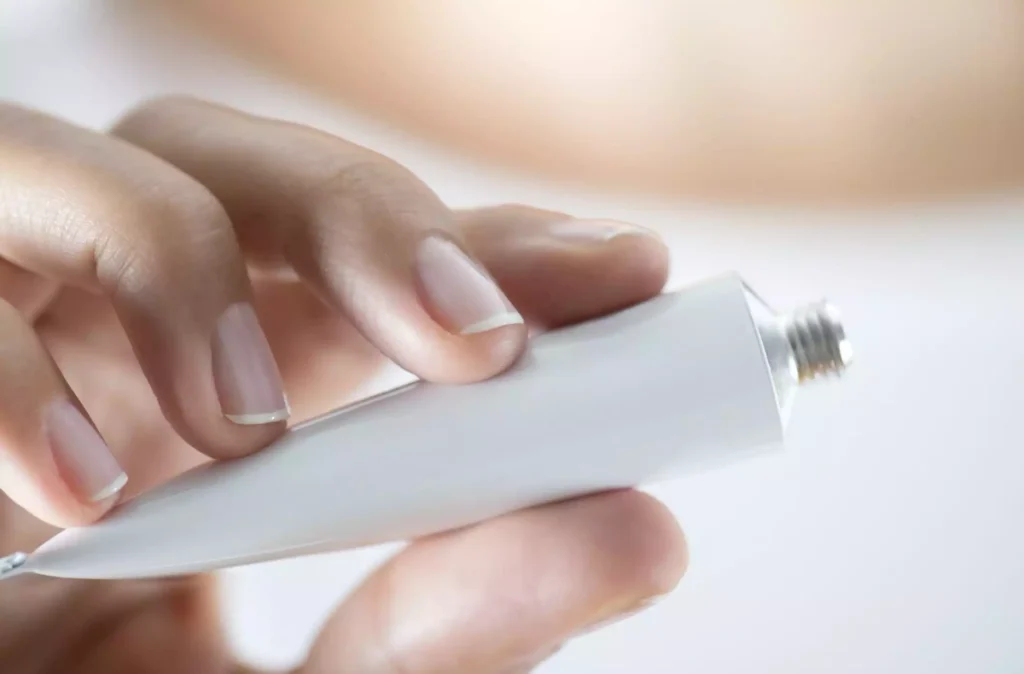
Step-by-step guide:
Step 1. Choose the appropriate formulation (solution or foam) and concentration (2% or 5%) suitable for women.
Step 2. Part your hair in the areas experiencing thinning. Apply the recommended amount of minoxidil directly to the scalp, not the hair.
Step 3. Massage the product into your scalp using your fingertips to ensure even distribution.
Step 4. Use the product twice daily, as directed, for several months to see noticeable results.
Step 5. Keep track of your hair growth.
Way 3. Manage stress
Practicing stress-reducing techniques like yoga, meditation, exercise, or hobbies can impact hair health by reducing stress-related hair loss.
Step-by-step guide:
Step 1. Recognize the sources of stress in your life, whether they are work-related, personal, or environmental.
Step 2. Select activities that help you relax, such as yoga, meditation, deep breathing exercises, or engaging in hobbies you enjoy.
Step 3. Incorporate these stress-relief activities into your daily or weekly routine to ensure regular practice.
Step 4. Use at least 30 minutes of physical activity most days of the week to boost your mood and reduce stress.
Way 4. Proper hair care
Avoiding excessive heat styling, harsh chemicals, and tight hairstyles, while using gentle, sulfate-free shampoos and conditioners, can protect hair from damage and breakage.
Step-by-step tutorial:
Step 1. Select sulfate-free shampoo products.
Step 2. Minimize the use of heat styling tools like flat irons, curling irons, and blow dryers. When necessary, use a heat protectant spray.
Step 3. Choose an ionic hair dryer like Laifen Swift to reduce heat damage and frizz.
Step 4. Reduce the frequency of chemical treatments such as coloring, perming, and relaxing.
Step 5. Avoid tight hairstyles like braids, ponytails, and buns that can pull on the hair and cause breakage. Use soft hair ties and alternate styles to give your hair a break.
When do you need to see the doctor if you lose your hair?
Here are some signs that it’s time to seek medical advice:
- Immediate increase in hair shedding.
- Hair falls out in clumps or bald patches appear.
- Scalp pain, itching, redness, or swelling.
- Gradual thinning or receding hairline.
- Post-illness, surgery, or medication.
- Noticeable thinning with a family history of hair loss.
- Hair loss with fatigue, weight changes, or hormonal issues.
FAQs
Q1: Does metformin cause hair loss in women?
Metformin, commonly used to treat type 2 diabetes, is not widely known to cause hair loss. However, any medication can have rare side effects, and individual reactions vary.
Q2: Does lisinopril cause hair loss in women?
Lisinopril, an ACE inhibitor used for high blood pressure and heart conditions, can potentially cause hair loss as a rare side effect.
Q3: Can anemia cause hair loss in women?
Yes, anemia, particularly iron-deficiency anemia, can lead to hair loss. Iron is essential for healthy hair growth, and a deficiency can disrupt the hair growth cycle. Treating anemia through diet or supplements can help restore normal hair growth.
Q4: How to stop hair loss in elderly women?
Managing hair loss in elderly women involves maintaining a balanced diet rich in essential nutrients, using gentle hair care products, and considering medical treatments like minoxidil.

